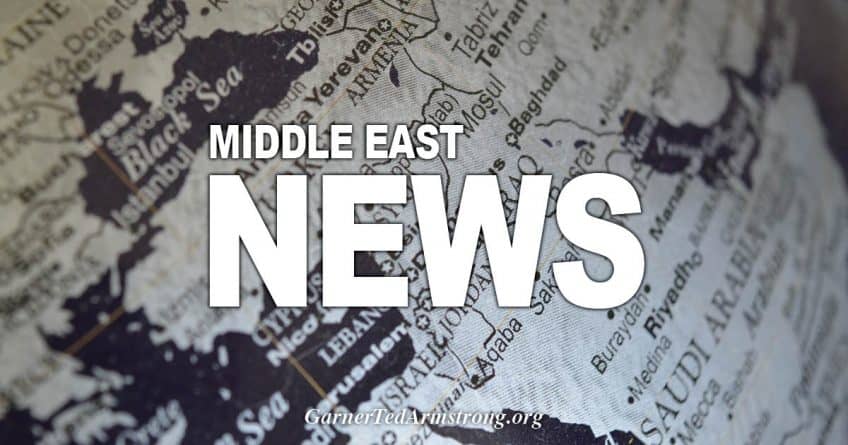New evidence reveals that the relationship between Pyongyang, Tehran, and Damascus is more extensive and long-standing than we thought.
Last week, Reuters revealed the existence of a confidential U.N. report claiming that two North Korean shipments bound for the government agency in charge of Syria’s chemical weapons were intercepted in the past six months.
Put in its proper context, the news of the shipments, both of which violated existing international sanctions, is further evidence of North Korea’s nefarious role in spreading weapons of mass destruction and missile technology to other rogue regimes across the globe. The U.N. report highlights the extent to which North Korea has been a principal strategic partner to Iran and Syria for decades. Understood correctly, it should have major implications not only for how the U.S. handles the saber-rattling regime of Kim Jong-un but for how the Trump administration chooses to approach Iran today.
Pulling a single thread reveals the tangled web of relations between Pyongyang, Tehran, and Damascus. Take, for instance, the 2007 Israeli raid that destroyed Syria’s covert nuclear reactor. North Korean scientists provided the technology and material for that reactor, which, according to former CIA director Michael Hayden, was “an exact copy” of a North Korean reactor. “The Koreans were the only ones to build these reactors since they purloined the designs from the British in the 1960s,” Hayden recalled. Ten North Koreans who “had been helping with the construction” of the Syrian reactor were killed in the Israeli strike, according to media reports at the time.
In 1991, then-Syrian president Hafez al-Assad made a military-acquisition alliance with North Korea, which allowed him to purchase missiles from the North, and gave him access to the expertise needed to produce more-advanced weapons domestically. North Korea also helped the Syrian Scientific Studies and Research Center construct a missile complex in Aleppo used for fitting chemical weapons on Scud missiles in the early 1990s. A quarter century later, it turns out the two recently intercepted North Korean shipments were headed for the same Syrian agency.
The timing is suspect as well. The U.N. report specifically addressed shipments intercepted in the last six months. The Assad regime only retook Aleppo from the rebels in December 2016. It doesn’t take an expert, then, to guess at the likely contents of the shipments.
In the wake of the 9/11 terrorist attacks, the two states signed a “scientific cooperation” agreement. The year was 2002 — the same year that the existence of Iran’s own plutonium reactor in Arak was publically exposed. Tehran appeared to understand the benefits of redundancy; it was an insurance policy if something should befall its own burgeoning nuclear program. That helps to explain why Iran financed the North Korean nuclear venture in Syria to the tune of $1 billion. It was only then, in 2002, that the construction of Assad’s al-Kibar plutonium reactor began in earnest.
Although Israel destroyed the site five years later, denying Iran the dividends from their investment, they were impressed by the cooperative agreement reached between the Kim and Assad regimes in 2002. The result was a duplicated and expanded science-and-technology deal inked between Iran and North Korea a decade later.
The North Korean Nexus with Iran
Of course, the bilateral collaboration between Pyongyang and Tehran predates that 2012 agreement. For example, WikiLeaks exposed a February 2010 diplomatic cable from confirming Iran’s purchase of 19 advanced ballistic missiles from North Korea — missiles that put Western European capitals within Tehran’s reach.
Just as Iran’s Shahab-2 missile is modeled on North Korea’s Hwasoong-6, Iran’s Shahab-3 missile also matches North Korea’s Nodong. That shouldn’t be too surprising, considering that Iranian scientists and military officers frequently attend North Korean test launches of long-range ballistic missiles and have maintained a presence at North Korean nuclear-test sites for at least the last decade. It’s only natural that such curiosity would run both ways, too: From the 1990s onward, dozens of North Korean scientists and technicians are also known to have worked inside Iran.
The watershed year between the two states came in 2012, as President Obama was concluding his disastrous nuclear deal with Tehran. According to detailed analysis published in February by Israel’s BESA Center, since reaching their cooperation agreement, North Korea and Iran have been working on “miniaturizing a nuclear implosion device in order to fit its dimensions and weight to the specifications of the Shahab-3 re-entry vehicle.” The authors of that analysis went on to conclude that, “the nuclear and ballistic interfaces between the two countries” are “long-lasting, unique, and intriguing,” and that North Korea is ready and able to clandestinely assist Iran in circumventing the nuclear deal, while Iran is likely helping North Korea upgrade its own strategic capacities.
The Parchin Connection
It should set off alarm bells that North Korea and Iran have been working together to overcome some of the remaining challenges that prevent Pyongyang from targeting the U.S. homeland with nuclear warheads — namely, the warhead-miniaturization process and the perfection of its long-range ballistic missiles. But it should set off sirens that some of that work has been carried out at Parchin, the Iranian facility that Tehran insists is a military site and keeps off limits to international inspections.
Parchin should be familiar. When Obama administration officials were cooking up their nuclear deal with Iran, they repeatedly promised that critically important “anytime, anywhere” inspections would have to be part of the agreement. What happened instead was that they folded like a tablecloth, as they did on every declared red-line issue crucial to verifying Iran’s past nuclear-related military activity.
In 2015, Iran’s Supreme Leader Ayatollah Khamenei personally and repeatedly rejected any access to what he called military sites, including Parchin. So Team Obama came up with a secret side agreement with the International Atomic Energy Agency (IAEA), which would allow Iran to inspect its own site and provide its own soil samples.
Anyone could have guessed what would happen next.
“Despite years of Iran sanitizing the site and the Iranians taking their own environmental samples, the IAEA nonetheless detected the presence of anthropogenically-processed (‘man-made’) particles of natural uranium,” reads a new report released by the Institute for Science and International Security.
After years of Iranian denials and attempts to block access to the site, it turns out “substantial evidence exists that Iran conducted secret nuclear weapons development activities at Parchin,” including “the presence of uranium particles” and “a variety of other evidence of work related to nuclear weapons,” the report claims. It goes on to note the many suspicious site alterations that Iran made after the IAEA requested access in 2012 — which, again, is when Iran and North Korea signed their science-and-technology cooperation agreement.
It is also worth mentioning that in November 2012, the IAEA reported that Iran completed the installation of some 2,800 centrifuges at its Fordow uranium-enrichment facility, which was built and buried deep inside a mountain near the city of Qom. That report also noted that Iran installed more centrifuges at its fortified, underground fuel-enrichment plant in Natanz. Both facilities were producing uranium enriched up to 20 percent — a level useful only in the production of nuclear weapons.
Add it all up, and it becomes clear that because of Mr. Obama’s nuclear deal, the U.S. and the IAEA don’t know the scope of Iran’s past nuclear activities at precisely the moment when that knowledge is critical. The same lack of access afforded by the deal also prevents the U.S. from grasping the range of North Korea’s nuclear efforts, specifically experiments relevant to the detonation of a warhead that took place at Parchin. And the kicker is that a growing chorus of analysts today is calling for the Trump administration to negotiate a similar agreement with Kim Jong-un. Let that sink in for a moment.
An Evolving Axis Fifteen years ago, many scratched their heads at President George W. Bush’s inclusion of North Korea alongside Iraq and Iran in what he described as “an axis of evil.” Few recall that North Korea was actually the first of the three countries he listed in his 2002 State of the Union address, followed by Iran. It’s quite clear now that the third state on that list should have been Syria rather than Iraq. After all, according to Hayden, by 2001 the CIA was gathering “scattered, unverified and ambiguous information” regarding nuclear ties between Syria and North Korea. Even if the literal picture presented by Israel didn’t become clear until a few years later, by 2002 the two had signed their scientific-cooperation agreement and Iran’s plutonium reactor had become public. The writing was on the wall.
The recent sanctions-busting North Korean shipments to Iran highlight how dangerous it is to seal a structurally defective nuclear deal with a rogue state while leaving other distressing aspects of that state’s behavior untouched. They should make it abundantly clear that we must seriously address this blooming axis of proliferation, because any bilateral agreement with one of its members can be easily undone by another.
[Disclaimer]









